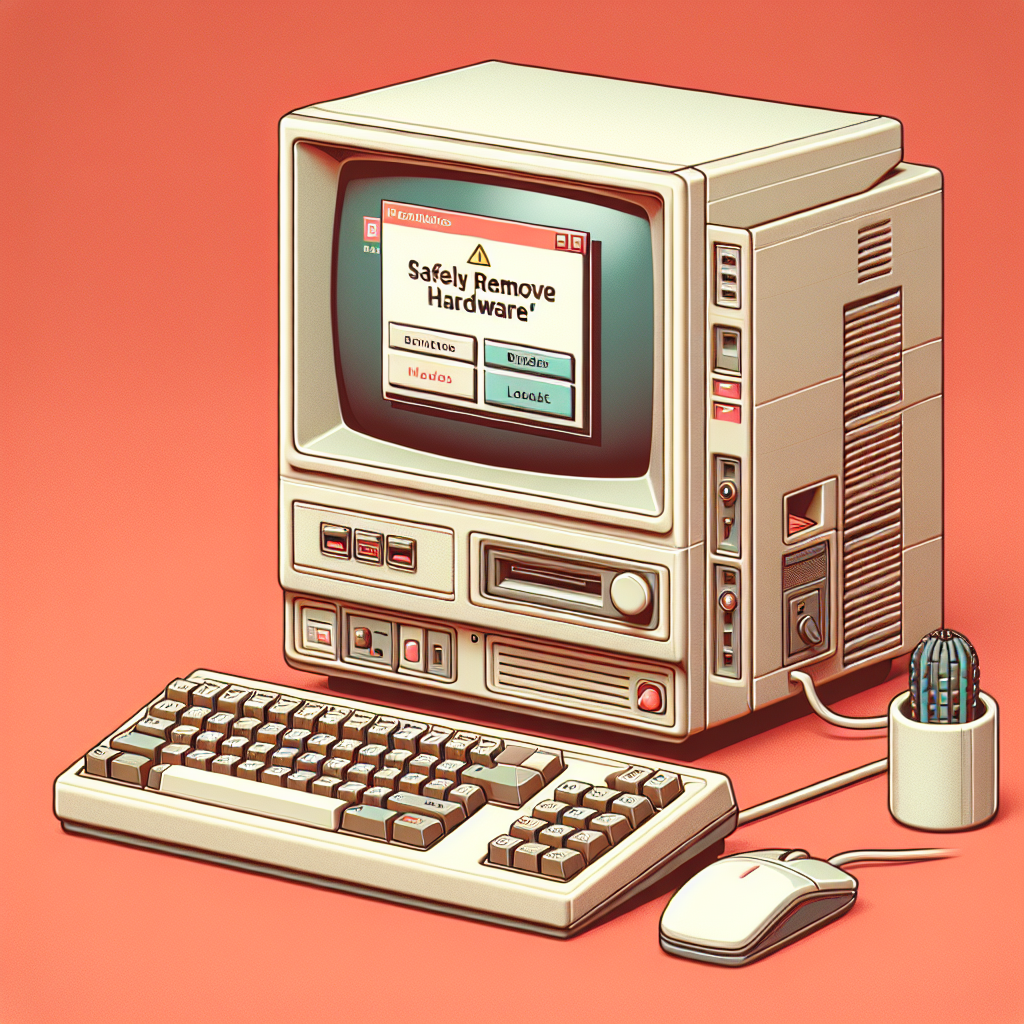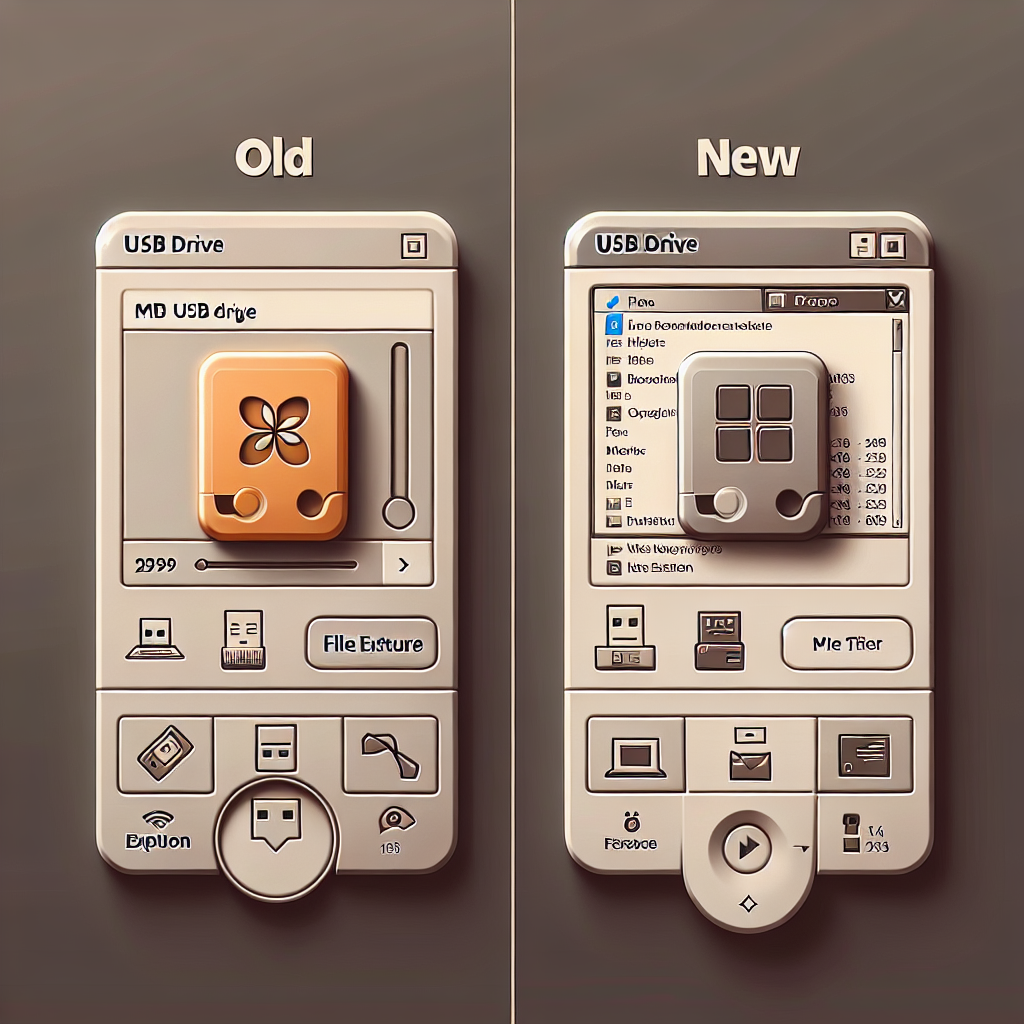USB drives have become an indispensable tool for storing and transferring data in our digital lives. However, the process of safely removing these devices has been a source of confusion and concern for many users over the years. In the past, failing to properly eject a USB drive could lead to data corruption and system instability. But have these risks persisted in the era of modern operating systems like Windows 10 and 11? So it begst the question Do You Really Need to “Safely Eject” USB Drives Anymore
The Dangers of the Past: Why Ejecting Mattered

In the early days of USB technology, the “Safely Remove Hardware” notification was a crucial step in the data transfer process. Ignoring this warning could result in a host of problems, including:
- Partially saved files
- Corrupted documents
- System crashes and blue screens of death
Tech websites and user manuals emphasized the importance of properly ejecting USB drives to prevent data loss and maintain system stability. It was a ritual that users had to follow religiously to avoid the wrath of their suffering PCs.
The Shift to Quicker Removal in Modern Operating Systems
As operating systems evolved, so did the way they handled USB drive ejection. With the release of Windows 10 and later versions, Microsoft introduced changes that allowed for quicker removal of USB drives without compromising data integrity. In 2019, Microsoft confirmed that users could safely unplug their USB drives without going through the formal ejection process, as long as they weren’t in the middle of a file transfer.
This change was made possible by optimizations in how modern operating systems handle USB drives. In the past, connected drives would constantly auto-update in the background, which could lead to data corruption if the drive was unplugged at the wrong time. However, in Windows 10 and newer versions, the default setting is to write files to the USB drive only when explicitly commanded to do so through copy/paste actions or other file operations. This means that the risk of data corruption is significantly reduced, even if the drive is unplugged without formal ejection.
How Modern Operating Systems Handle USB Drives

Behind the scenes, modern operating systems have implemented changes to optimize USB drive performance and minimize the risk of data corruption:
- Connected drives no longer constantly auto-update in the background, saving time and resources.
- The default setting is now to write files upon command through copy/paste actions, rather than continuously.
Quick Removal vs. Better Performance: Understanding the Options
In Windows 10 and 11, users have two options for managing their USB drives: “Quick Removal” and “Better Performance.” These options can be accessed by right-clicking on the USB drive icon in File Explorer, selecting “Properties,” and navigating to the “Hardware” tab.
- Quick Removal: This is the default mode in modern versions of Windows. When Quick Removal is enabled, users can safely unplug their USB drives at any time without the need for formal ejection. This mode prioritizes data safety and convenience over performance.
- Better Performance: This mode utilizes write caching to optimize transfer speeds. When Better Performance is enabled, the operating system will cache write operations to the USB drive, which can improve performance. However, this mode requires users to properly eject their drives using the “Safely Remove Hardware” option to ensure that all cached operations are completed before unplugging the device.
While the Better Performance mode may seem appealing for its potential speed benefits, benchmark tests have shown that the actual performance gains are minimal for most users. Unless you regularly transfer large files and require every last bit of speed, you likely won’t notice a significant difference between the two modes. In most cases, the convenience and peace of mind offered by Quick Removal outweigh the negligible performance benefits of Better Performance.
Safely Remove or Simply Unplug: What’s the Best Practice?

So, what’s the bottom line when it comes to safely removing USB drives in the era of Windows 10 and 11? The answer is: it depends on your preferences and risk tolerance.
If you’re using a modern operating system and you’re not actively transferring files to or from your USB drive, it’s generally safe to unplug the device without going through the formal ejection process. The optimizations in Windows 10 and newer versions have made it much less likely that abruptly unplugging a USB drive will result in data corruption or system instability.
However, if you’re someone who prefers to err on the side of caution, using the “Safely Remove Hardware” option is still a perfectly valid choice. While it may take a few extra seconds, formally ejecting your USB drive can provide peace of mind and an extra layer of protection against potential data loss.
Ultimately, the choice between quickly unplugging your USB drive and using the safe removal process comes down to personal preference and the specific situation. If you’re in a hurry and you’re confident that no file operations are in progress, feel free to unplug your drive without hesitation. But if you’re unsure or you simply prefer to play it safe, taking the time to eject your drive properly is never a bad idea.
If You Are Looking For Better Advice and Better Support give us a call at 03 9087 4389
